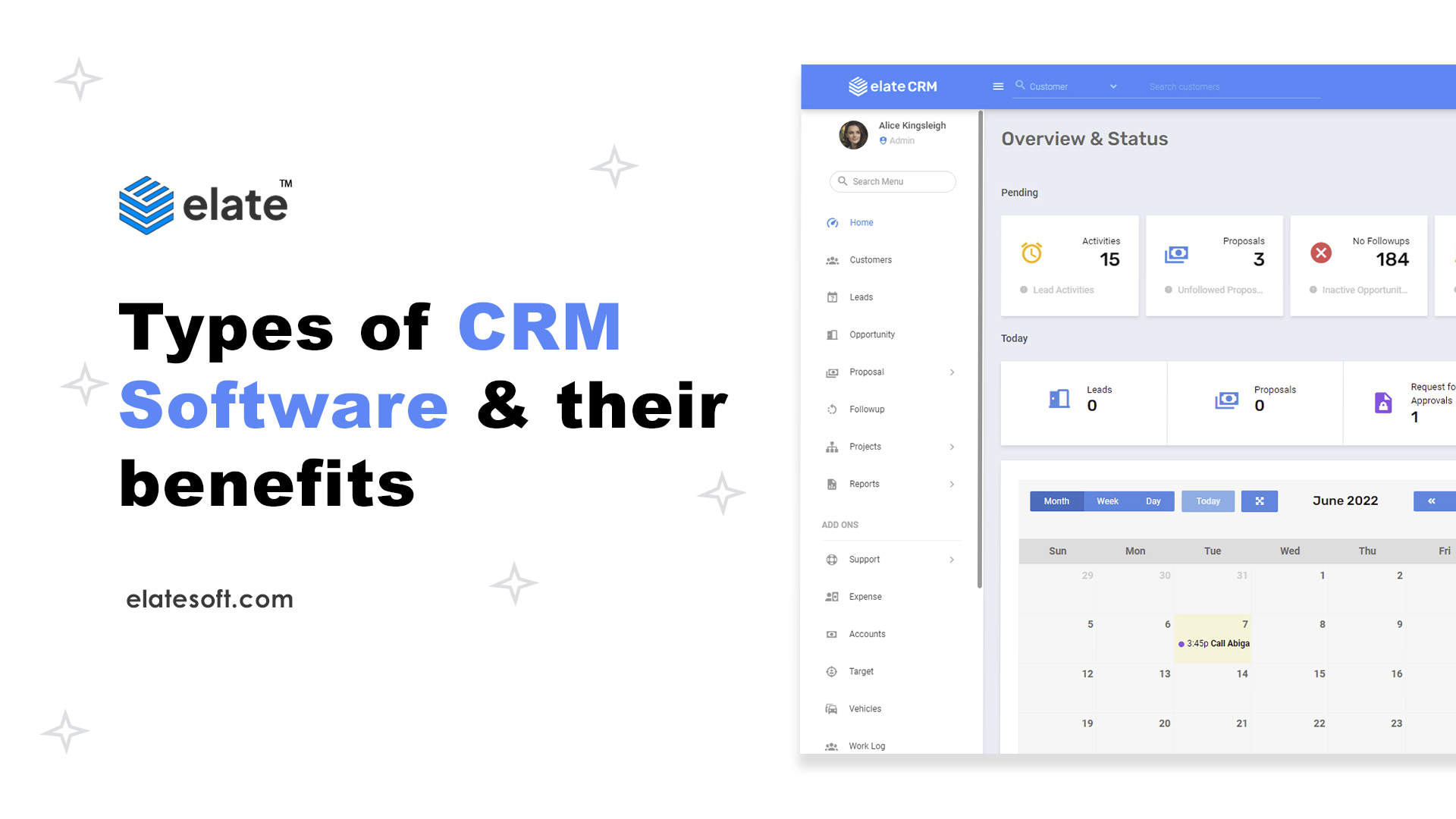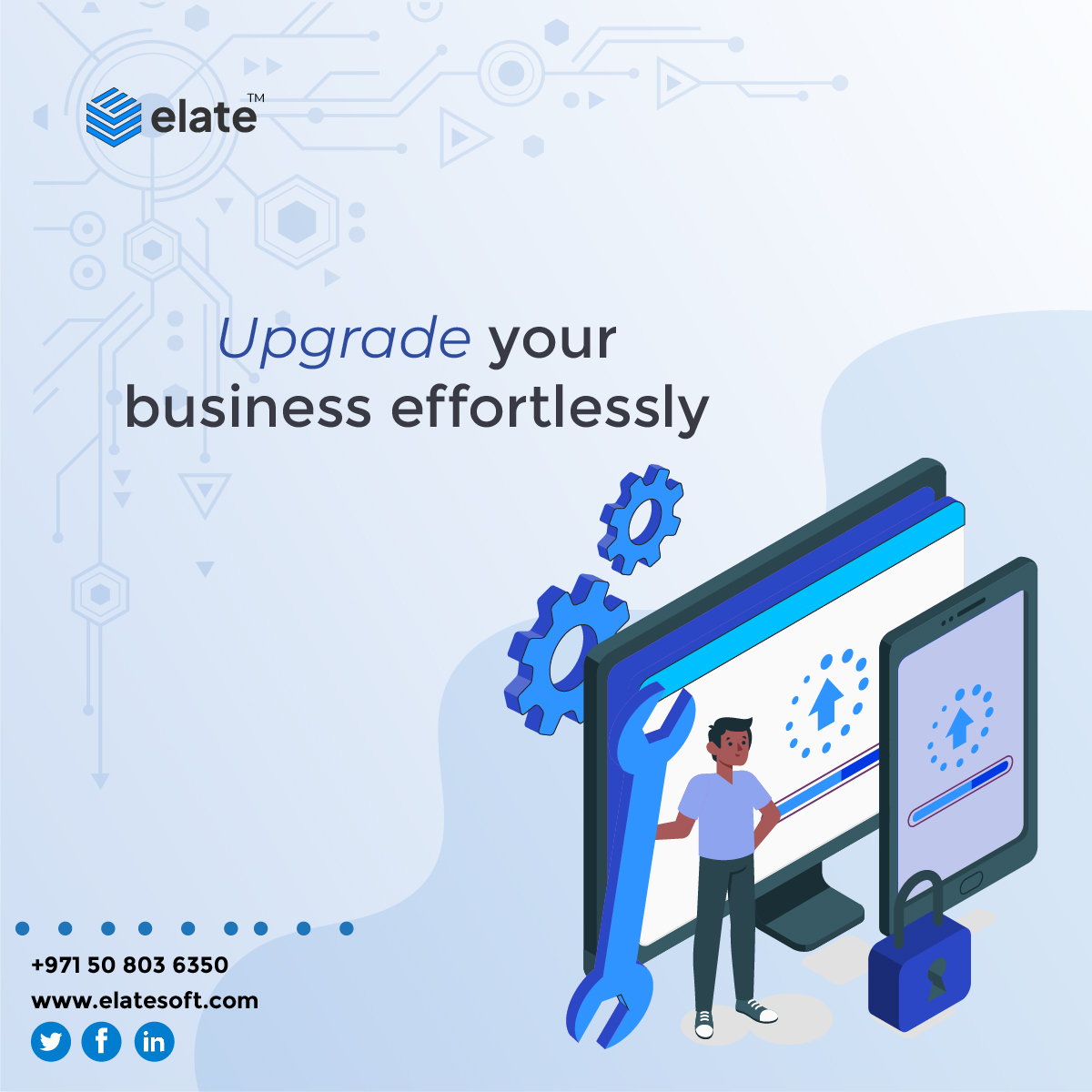
1/31/2025
Types of CRM Software and their benefits
CRM software sometimes appears to have two sharp edges. On the one hand, it includes cool tools that make it easier to increase sales, develop focused campaigns, and monitor KPIs so you can constantly improve better. However, there are also many available options. Where do you start? To help you better understand what you might need, we’ll go over the main Types of CRM Software software in this article.
Let’s discuss the Types of CRM Software and their benefits
We’ll examine four types of CRM Software, including their attributes, advantages, and disadvantages.
- Analytical types CRM Software
- Operational types CRM Software
- Collaborative types CRM Software
- Strategic CRM types Software
1. Analytical types CRMs
The collection of client data and its analysis for patterns and trends are significant concerns for an analytical CRM Software.
Its method of operation entails gathering, analyzing, segmenting, storing, processing, and also publishing all client data.
You can use this information to spot trends and preferences by taking note of the customer’s contact details, their comments, and any other pertinent information.
These patterns aid the business in better comprehending how its clients have been affected by or will be affected by a product or service.
It enables the business to improve consumer focus in areas like sales as well as customer service.
Additionally, these benefits, combined with in-depth data analytics, help the business better understand the wants and needs of its market.
Features
Gathers all information into one basis
Analytical systems gather information from the organization and work with all customer data.
These systems can be used by any group, division, or office that interacts with customers to deposit analytical data into its main storage space.
Prioritization and Customer Segmentation
By exposing customer traits that can be utilized to divide clients into predefined segments, analytical CRM sheds light on the market landscape.
In other words, you can customize your goods and services to each group.
Businesses might use data analytics to create a new index.
To utilize other models or predictive variables, you may, for example, build segment numbers or labels.
Typically, derived data for client segmentation covers a wide range of attributes.
Some factors can help you choose the appropriate clientele to sell a new product to.
Others will facilitate the development of a fresh marketing strategy or the improvement of the established sales channel mix.
Overall, businesses benefit from focusing on future profitability as well as consumer behavior because it enables them to allocate resources to their most lucrative clients.
OLAP Tools
The term “online analytical processing” (OLAP) is an abbreviation.
It is a very effective tool for locating and discovering data. Its powers include an endless reporting capability, intricate statistical analyses, and also perceptive scenarios that raise relevant questions in advance of the future event.
These technologies are the foundation of business analytics tools, which enable you to peel back layers of data to get the crucial information you require.
In other words, it is the instrument that helps you to view the overall picture, separate important data from irrelevant ones, and to act accordingly.
Benefits
The primary function of analytical CRM in an organization is to improve the choices made by the teams involved in current or upcoming campaigns.
CRM is analytic because of a few key characteristics.
As follows:
- It improves the efficacy of advertising tactics.
- Aims to know the greatest material that will draw in opportunities, possible clients, and leads.
- It increases the rate of customer retention.
- It increases patron loyalty.
- You can use it to determine which customers to upsell to and when.
- By examining what sells and what doesn’t, sales increased.
- It helps you locate and address your staff’s and your company’s weak points.
- It facilitates the methodical development of client relationships.
2. Operational types CRMs
Operational CRMs give you the ability to actively support and grow your company’s customer support base. It is specially made to aid in the facilitation of customer-related operations.
Your company’s interaction with current and potential customers can benefit from a functional CRM.
Businesses can use this type of CRM to organize their operations and give employees the tools they need to manage clients with excellence and happiness.
Sales, customer service, and marketing are the three key business areas that operational CRMs are particularly focused on.
In this regard, compared to the other categories, it is the broadest.
These systems help businesses generate leads, convert those leads to contacts, and provide a crucial foundation for enticing and keeping converted consumers for an extended length of time.
Features
Automation in Customer Service
This makes it easier to automate the procedure for connecting with customers, improve customer care, communication, and experience, and even motivate them to promote the brand in person.
By giving your clients the choice of self-service, this is essentially accomplished.
This will apply when you schedule or order a good or service from your mobile device, develop more natural payment options online, etc.
Live chat, prompted email responses, offline assistance, and online knowledge bases are some of the tools available in operational CRMs (e.g. FAQs, blogs, etc.).
Additionally growing in popularity are chatbots that can respond to customer inquiries.
Sales Automation
This is how technology is being used to manage sales activity. It gives all of the company’s sales departments a standard for managing sales processes and generic terms for sales processes.
Streamlining the sales process for a business, enables its staff to spend much more time speaking directly with prospective customers and enhancing the loyalty of the existing customers.
The majority of the time, operational CRM sales automation features carry out tasks like scheduling emails for potential clients, enabling prospects to schedule a meeting with sales representatives, and providing tools for managing and recording sales calls.
Additional features are also available, such as the creation of sales records, enhanced sales record clarity, and simpler lead ranking.
Automated marketing
The marketing team can manage tedious and time-consuming duties thanks to this function of operational CRM.
For more efficiency, the team allocated to the machine tasks like phoning contacts, planning email campaigns and distributing substance offerings that would have otherwise taken up a lot of the team’s time.
The scope of operations also includes all event-based offers, customer segments, promotions, and managed marketing campaigns.
Teams can access customer-related data through automated marketing for efficient campaign design, execution, and evaluation.
Customer segmentation, program management, event-based marketing, and promotions are additional aspects of automation.
Benefits
Supporting customers who use a service or product is the core purpose of an operational CRM. But there are also other advantages to take into account.
These include:
- Effective administration of a variety of marketing initiatives.
- Since it collects data from three essential departments, it keeps track of pertinent information.
- Accomplishing goals and targets for sales revenue while maximizing sales.
- Maximizing the most advantageous campaign and event-based offer opportunities.
- Allowing the client to decide how to contact customer support.
3. Collaborative types CRM
The transmission of customer data between groups within a company is necessary for collaborative CRMs.
CRMs that were previously addressed concentrate on marketing and sales, but this variety focuses on customer service.
The new study from SaleForce also deconstructs the entire big picture of workplace collaboration. As a result, according to 91% of CEOs, team misalignment directly affects project turnover.
Collaborative CRMs support the employees who work in departments like marketing and sales and allow you to dramatically increase information flow between them.
It is used by department teams who don’t communicate well with one another or have trouble resolving a customer’s issues.
The main goal is to properly accommodate the clients, even if that necessitates giving the departments access to private data.
Features
Interaction management and channel management are the key aspects.
Interaction management
This makes it easier to keep track of all the crucial details of your customer’s trip chronology. You can always go back and use the map to fix things or show appreciation for loyalty.
Additionally, this feature allows dividing contacts into groups based on various markers and standards.
Channels management
Contrarily, this function offers the customer a selection of communication channels from which to pick.
The options include live chat, text messages, phone calls, emails, social media platforms, and more.
However, you must make sure that you are present and available on any channel the customer selects.
Benefits
The basic function of collaborative CRM System is to distribute gathered customer data to various teams inside a business, but that is just one aspect of what they accomplish.
Let’s examine the further uses.
- Coordinating shared objectives among several teams.
- Handling the customer’s entire experience in depth.
- Unwavering customer service across all channels.
- Access to connected data that provides a comprehensive understanding of the customer.
4. Strategic types CRM
Companies that are prepared to boost sales, earnings, and customer pleasure must strategically use CRM.
The majority of CRMs on the market today fall short of giving users a true strategic insight into their customers’ experiences. Long-term client relationships are the emphasis of strategic CRM.
It typically forms a component of collaborative CRM and, as such, offers capabilities and advantages that are comparable.
In essence, forming data from strategi CRM solution is done to improve user expectations and experience. Additionally, it takes into account how employees contribute to reaching desired objectives.
In other words, we are looking for the most important concerns that consumers encounter.
Features
Omnidirectional project management
After an organization commits, the next crucial step in developing CRM strategies is the creation of a productive and advantageous project team.
Because they will be the ones making the majority of the decisions in the project, each team member needs to be an accomplished and committed professional.
Business Evaluation
CRM plans must also obsess on and prioritize specific business requirements.
To gather the actual perceptions of the strategies to be adopted and the results of the strategy to be used at the final point, this feature comprises a series of surveys and questionnaires for top-level sales, marketing, and financial executives.
The project management component takes a holistic approach to a strategy’s managerial, technical, financial, sales, and marketing aspects.
Interdisciplinary cooperation
All development projects and the execution of the operations should be communicated to every department.
Focusing on useful solutions and the results of the strategies is always an option.
Strategic CRM ensures such implementations and knowledge of all cross-departmental initiatives.
Benefits
- Enhances customer experience through efficient sales and marketing
- Carries out incisive customer analytics.
- By informing you what they buy from you and when they buy it, how they buy from you, why they buy from you, and how they solve problems with you, it paints a picture of how your consumers engage with you.
- Every aspect of customer interaction, such as marketing, sales, trends, customer service, behavior, and motivators, is covered.
- Offers top-notch tools to solve client problems on time, every time.




